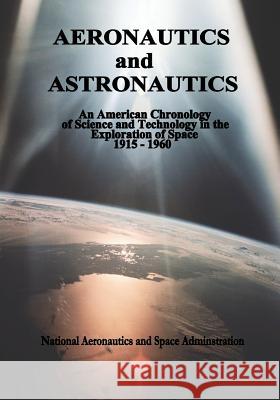Aeronautics and Astronautics: An American Chronology of Science and Technology in the Exploration of Space, 1915-1960 » książka
Aeronautics and Astronautics: An American Chronology of Science and Technology in the Exploration of Space, 1915-1960
ISBN-13: 9781495455988 / Angielski / Miękka / 2014 / 254 str.
Aeronautics and Astronautics: An American Chronology of Science and Technology in the Exploration of Space, 1915-1960
ISBN-13: 9781495455988 / Angielski / Miękka / 2014 / 254 str.
(netto: 98,52 VAT: 5%)
Najniższa cena z 30 dni: 104,01
ok. 16-18 dni roboczych
Bez gwarancji dostawy przed świętami
Darmowa dostawa!
For centuries flight was demonstrated in nature by birds, winged insects, bats, and some squirrels. Men remained earthbound. The 20th century witnessed the birth of practical aviation and the profound impact which flight increasingly imposed upon the ways of mankind. The world has been shrunk in time-distance relationships by the ever-increasing speed, range, and utility of aircraft. Statesmen, scientists, artists, businessmen, and tourists acquired global wings. The art and science of war was revolutionized by airpower and military missilry. While aeronautical progress provided atmospheric stepping-stones, developments in rocket propulsion provided the means of placing manmade objects in space beyond the earth's atmosphere and effective gravitational force. In the past three years, artificial satellites have been placed into or bit around the Earth and the Sun. Man is destined to follow his instrumented vehicles into space. By means of space vehicles, satellites, rocket-powered aircraft, and high-altitude balloons, the cataract of the earth's atmosphere has been removed for the first time from the eyes of scientists studying the universe. Revolutionary insight into physical and life science disciplines is afforded by investigation and study of the unearthly environment of space. This is the basic promise implicit in the potentialities of the scientific frontier in our time. Unforeseeable as well as predictable benefits for society on earth seem inevitable as a consequence of space exploration. Man's conquest of space presents a dramatic challenge. But we should be mindful of its historical evolution and its broadest implications. This volume is largely a response to repeated requests for basic historical information. It is intended to serve as a ready informational reference, one from whence more detailed historical analysis should proceed. Perspective on the dynamic pace of science and technology in aeronautics and astronautics is also served by a chronicle of events over the years. Behind the major milestones in man's conquest of space are many not-well-known events. Much more historical analysis and detail seem required to document and to assess the full history of research and development in aviation, rocketry, space flight, and their related fields. Spectacular events are but the final manifestation of the ideas, concern, and labor of many persons and institutions involved in scientific research, engineering development, finance, organization, management, and operations. With regard to space vehicles, the reader need not be reminded that the development of military missiles was a major factor in advancing the technology of rocket propulsion, a historical parallel to the first major application of aeronautics to human affairs during World War I. Yet the broad-based scientific conquest of space inherently possesses great consequences for society. Military applications of space technology in the United States are clearly the responsibility of the Department of Defense and the military services and not that of NASA. It seemed pertinent to include major developmental aspects of military technological efforts in this volume. The scope of this chronology is defined in accordance with the following criteria: Emphasize scientific research and engineering development in aeronautics and astronautics as well as their related fields. Demonstrate historic use of aircraft, rockets, balloons, and spacecraft as tools of scientific research. Specialize upon U.S. efforts with inclusion of sufficient items on general historical events and foreign progress to retain an undistorted historical context. Illustrate practical exploitation of technological progress in aeronautics and astronautics. Exploit generally available source materials to insure widest and early utilization of the material compiled."
Zawartość książki może nie spełniać oczekiwań – reklamacje nie obejmują treści, która mogła nie być redakcyjnie ani merytorycznie opracowana.











